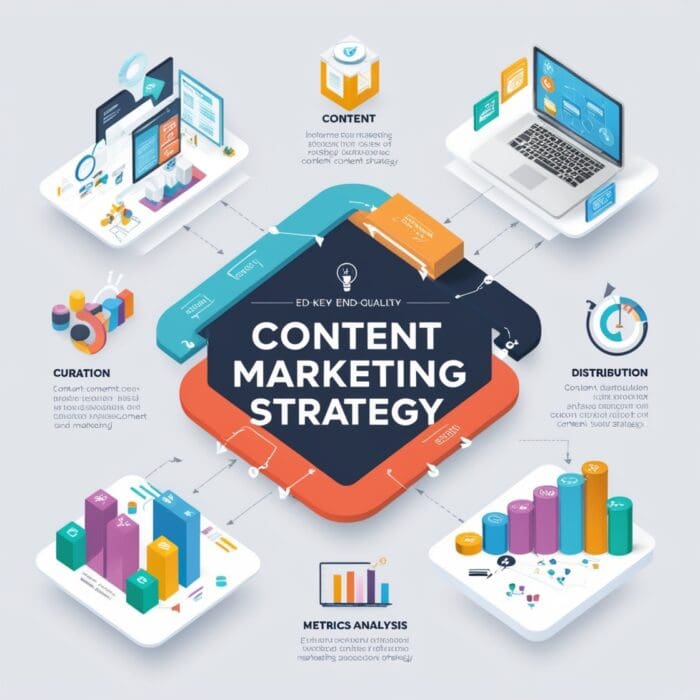
Content marketing 1-2: Content creating and curation, Publishing and distributing content, and Metrics and content marketing
Now we will be discussing crating and curation, publishing and distributing content, and metrics and content marketing.
Content creating and curation
Let’s start with the process of creating and curating content for your content marketing strategy. As you can see on this slide, we are now at the stage of “Decide on content themes”, where we will focus on the actual creation and curation of the content.
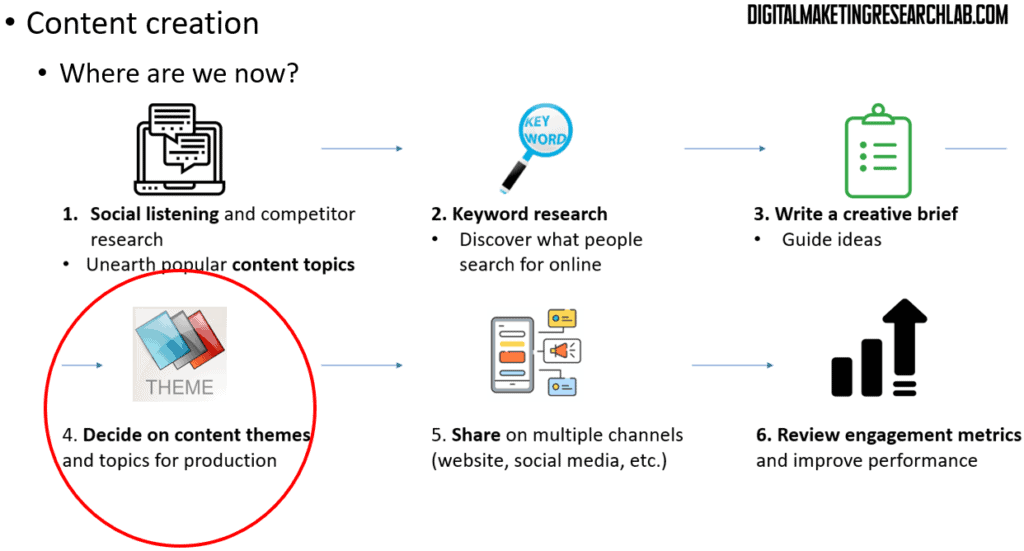
Content creation is a crucial step in the content marketing process. It involves the process of creating various formats of content around topic ideas that appeal to your target buyer personas. While this process requires creativity, there are some key steps to follow:
1. Process the information from your previous research.
2. Brainstorm some ideas and identify key themes.
3. Take a break and leave the ideas alone for a while.
4. Return to the ideas and validate them.
5. Create prototypes and test the content.
6. Finally, create the actual content.
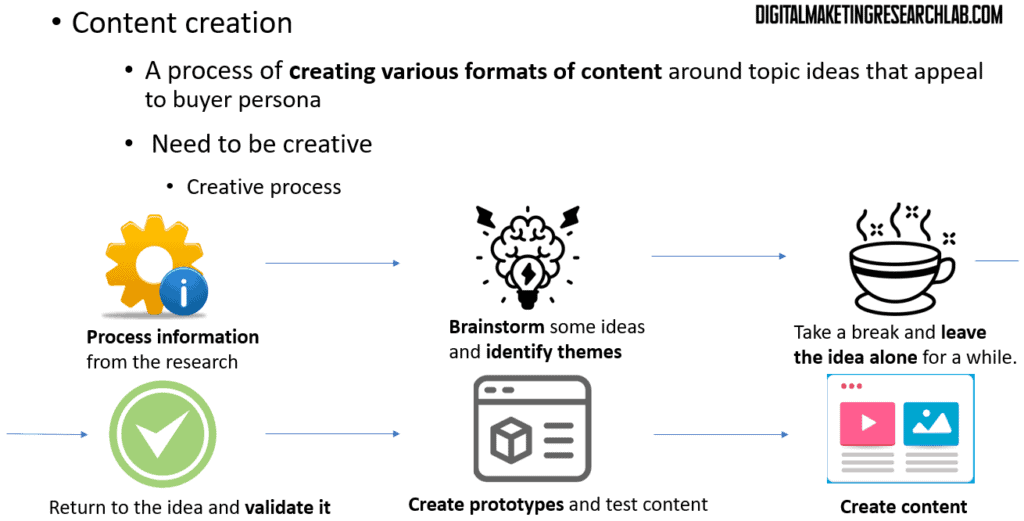
There are many different content formats that content marketers can utilize in their content mix. Let’s go through a few of them:
White papers are persuasive, authoritative, and in-depth reports on a specific topic. They present a problem and provide a solution. White papers are useful knowledge-sharing resources that can help build thought leadership and credibility within your industry. They are also strong lead generation and awareness tools.

E-books are another popular content format. They tend to be shorter and more interactive than white papers. E-books often focus on providing functional benefits, such as “how-to” guides, that businesses can implement immediately.
Infographics are a great way to present a large amount of data in a visual, easy-to-digest format.
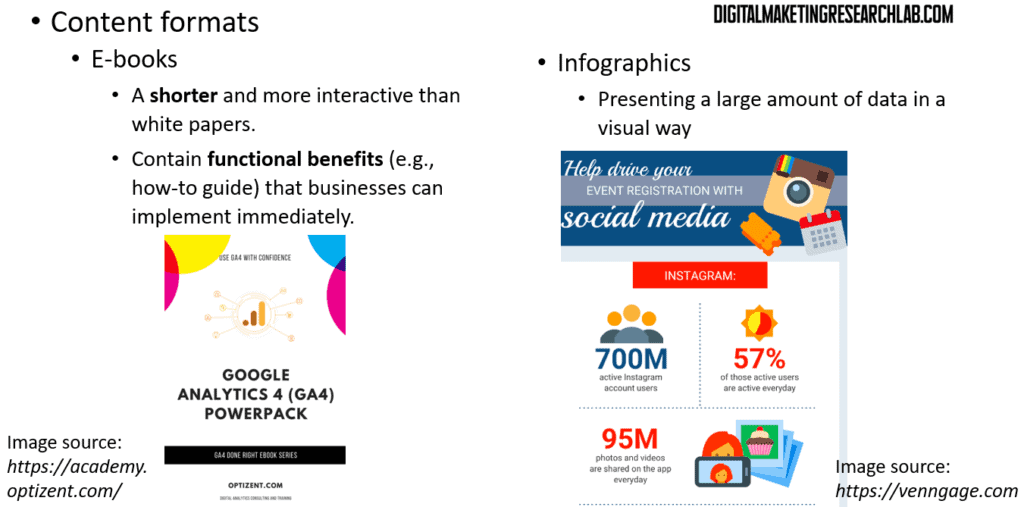
Blogs are online journals or informational websites where writers share their views on certain subjects. Blogs provide a platform for building thought leadership and driving engagement.
Interactive content is designed to encourage users to take an action and interact with a page. This can include things like images, videos, click-through elements, and polls.
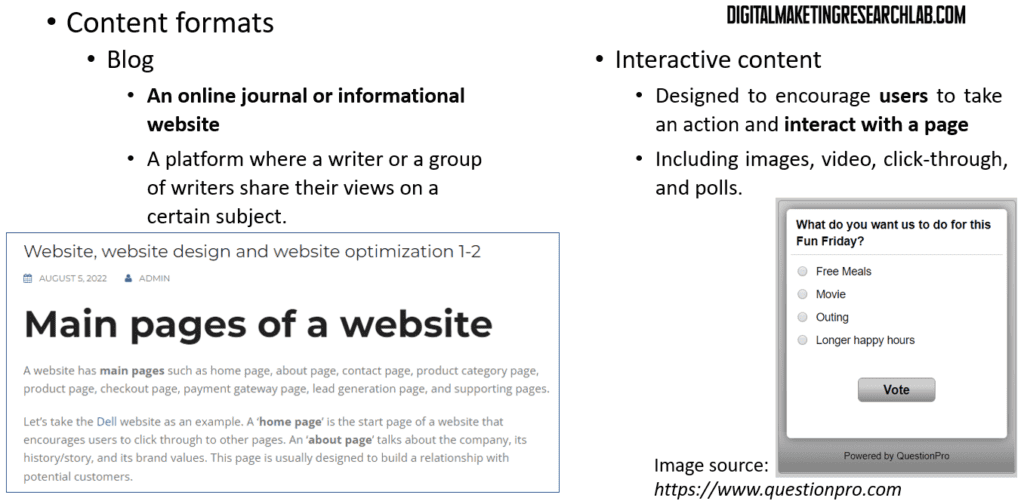
Videos are another highly effective content format. It’s important to note that audience attention spans are short online, so videos need to be short, sharable, and bite-sized.
Articles are long-form social posts that are focused on building thought leadership and demonstrating expertise in a particular area. They drive conversation and engagement around specific topics or themes.
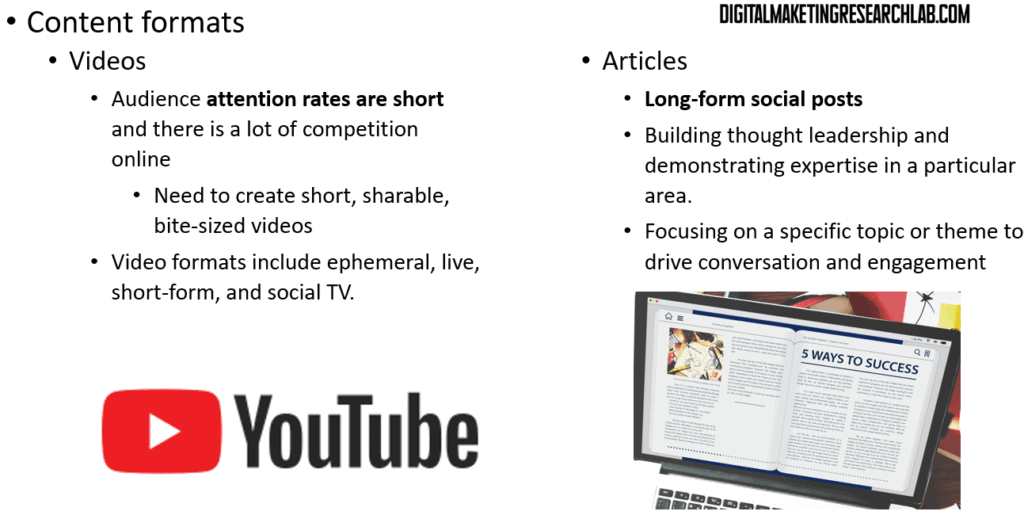
Templates and checklists can also be useful content formats. They help build credibility and solve pain points for your target audience.
Webinars are web-based seminars that allow you to connect with your audience in a more personal, human way. They provide opportunities to educate your audience on specialized topics or solve their business needs.
Podcasts are audio recordings that users can listen to on their mobile devices or through streaming services. Podcast formats can include interviews, conversations, reviews, and Q&As.
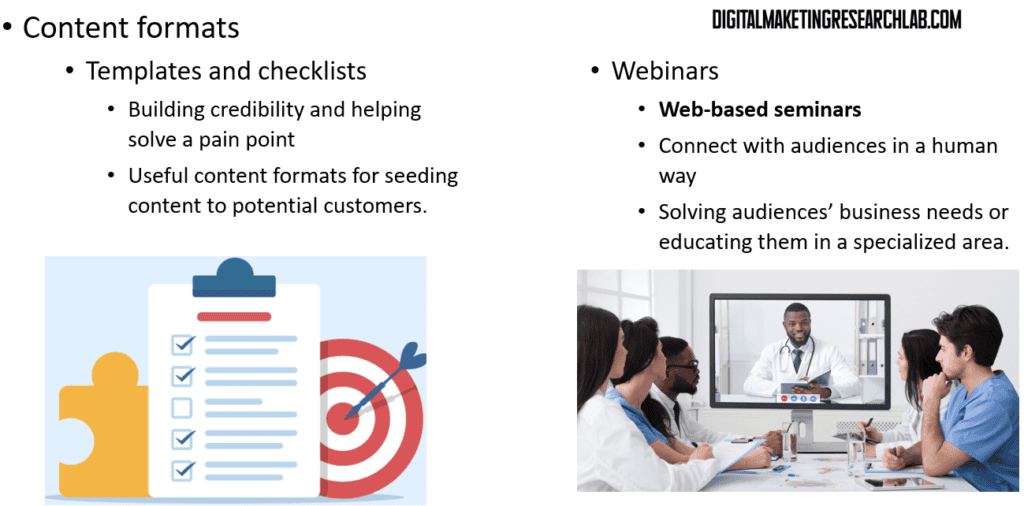

When it comes to creating high-quality content, there are a few best practice guidelines to keep in mind:
1. The content should provide clear benefits and utility to your target audience.
2. It should be fit for the specific platform or channel where it will be published.
3. You should be able to measure the effectiveness and impact of the content.
4. The content should be consistent in appearance and style with your overall brand.
5. It should be aligned with your business goals and objectives.
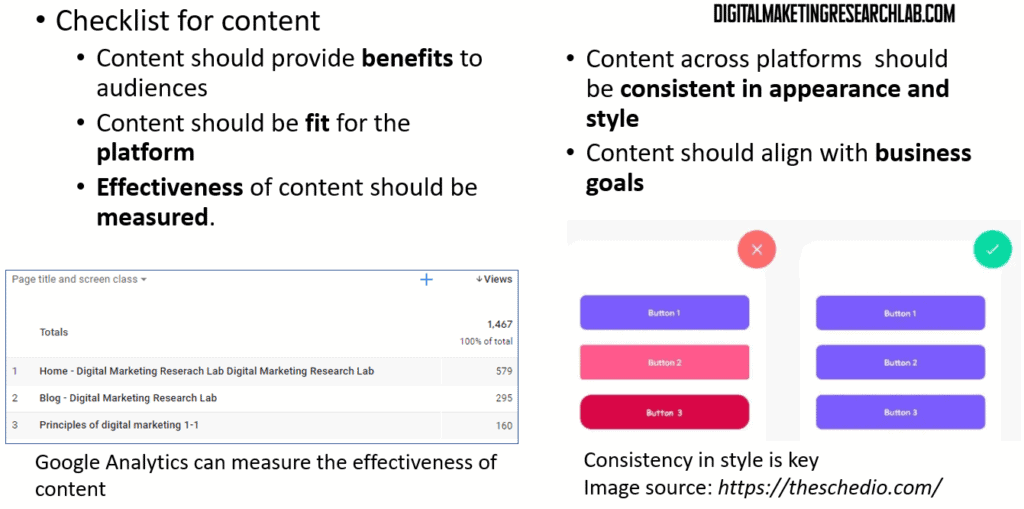
Headline writing is a crucial part of content creation. Some best practices for writing effective headlines include:
– Focus on the needs of the reader and show how you can solve their problem.
– Be specific and include numbers or percentages where appropriate.
– Put your most important words at the beginning of the headline.
– Drive a sense of urgency or interest in the content.
– Write for human engagement, not just search engines.
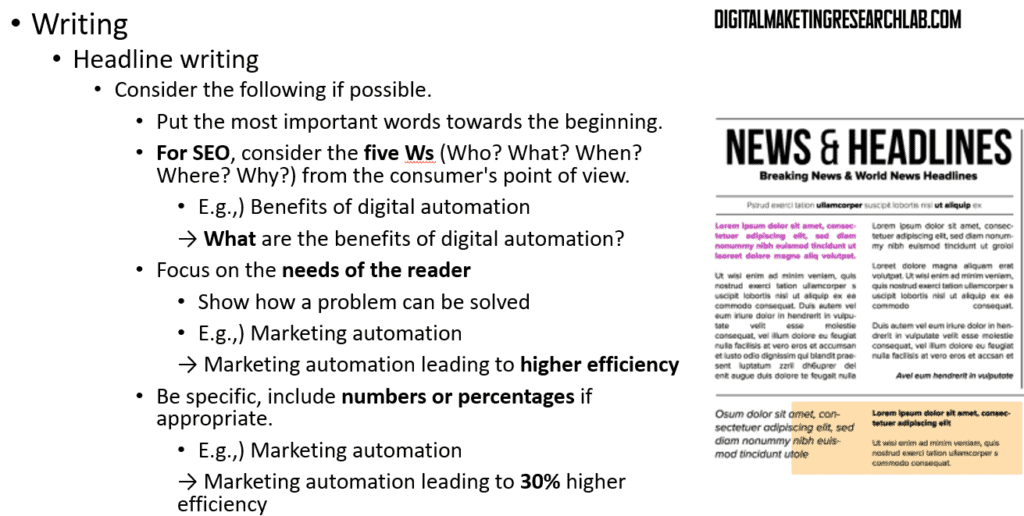
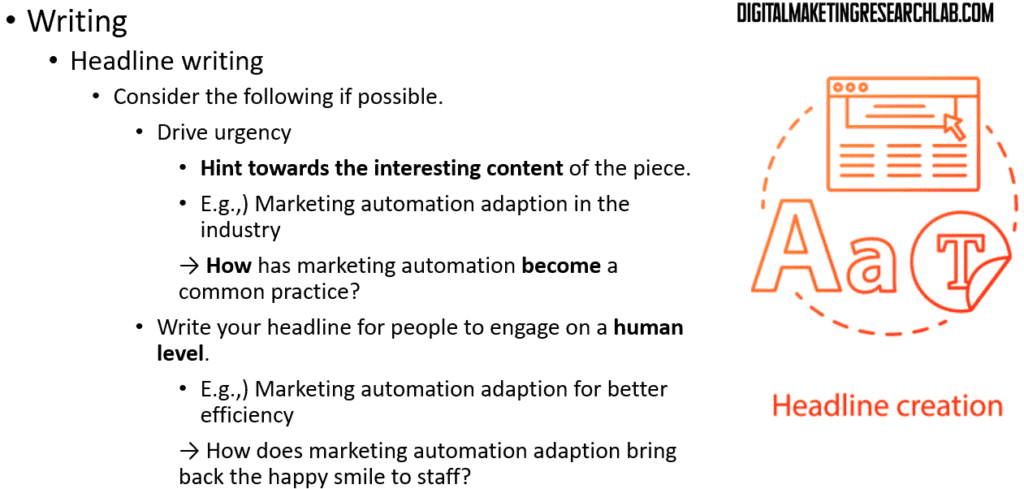
You may try CoSchedule Headline Analyzer tool, which can be used to optimize headline writing.
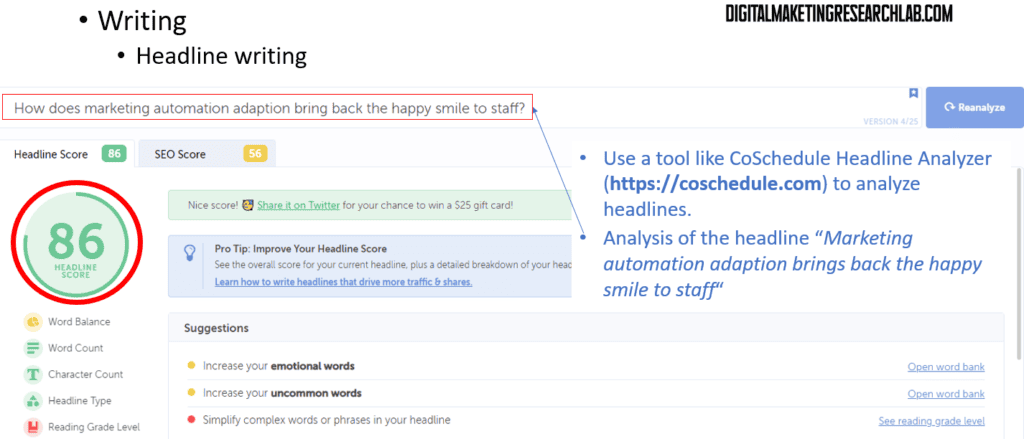
In addition to headlines, the overall writing and structure of your content is important. Some best practices include:
– Chunking your copy into short, digestible paragraphs.
– Using subheaders to make the content easy to skim and scan.
– Breaking up long stretches of text with relevant images and videos.
– For very long-form content, using a simple table of contents with anchor links.
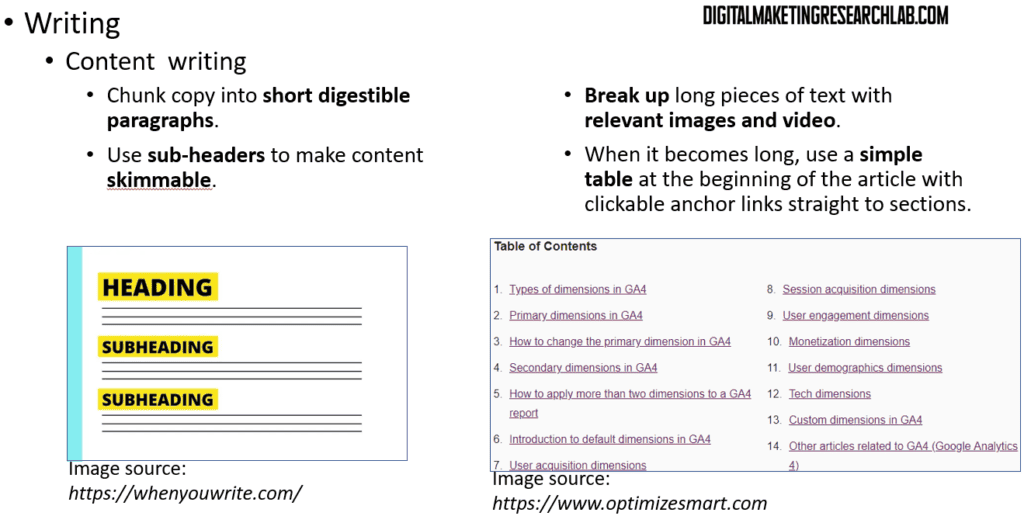
In addition to creating original content, content curation is another important technique in content marketing. Content curation involves using or sharing third-party content as part of your overall content strategy.
There are several benefits to content curation:
– It can make your content appear less promotional.
– It helps develop relationships with other publications and companies.
– It can position your brand as an industry leader.
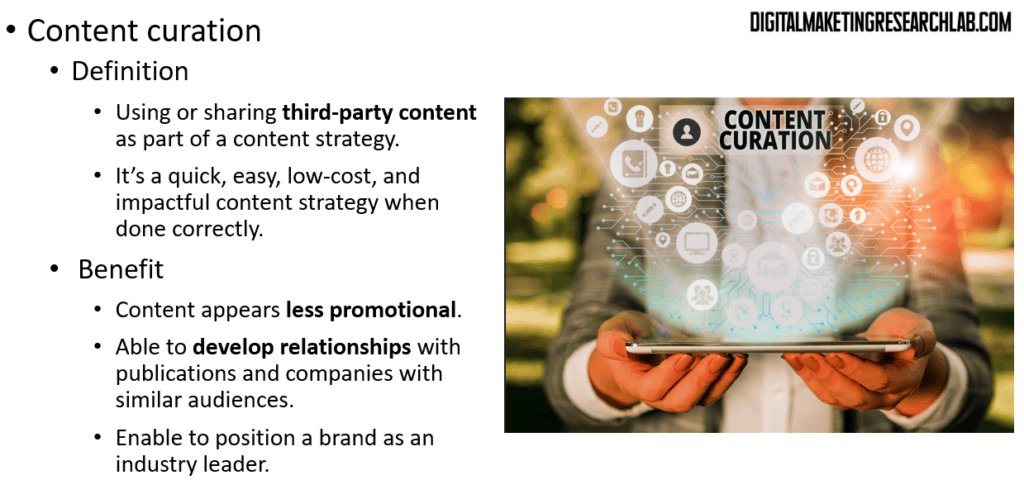
There are four main types of content curation:
1. Aggregation – Curating the most relevant content on a topic into a single piece.
2. Distillation – Taking the “noise” around a topic and reducing it to the core concept.
3. Mashups – Merging different content to create a new, original perspective.
4. Chronology – Presenting a timeline of curated information to show the evolution of a topic.

Let’s compare the differences between content creation and content curation:
Content creation involves original, unique content that is fully owned and controlled by your brand. It requires a higher investment of time and resources, but provides greater credibility.
Content curation, on the other hand, involves using third-party content and adding your own commentary. It requires a lower investment, but has the benefit of engaging your community and potentially positioning your brand as an industry leader.
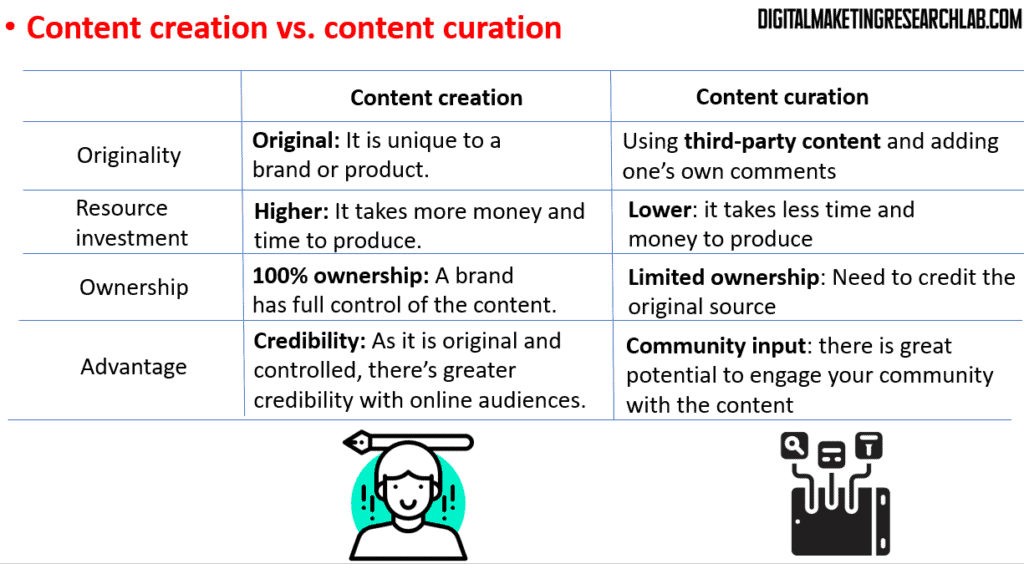
Another important content technique is content repurposing. This involves adapting or breaking up existing content to use it for another purpose.
The benefits of repurposing content include:
– Saving time by reusing existing research and content.
– Being more cost-effective than creating entirely new content.
– Reinforcing your message by having it appear in multiple places.

When repurposing content, there are a few key considerations to keep in mind:
– Be aware of video aspect ratios and length requirements for different platforms.
– Stagger the publication of repurposed content across different days and times to reach your audience effectively.

Content calendars are an essential tool for content marketers. A content calendar is a centralized document used to plan content across multiple platforms and themes.
The key elements of a content calendar include the copy, creative assets, content themes, publication dates and times, and the specific platforms where the content will be shared.

We are now “share on multiple channels” stage, indicating we have now moved on to the publishing and distribution portion of the content marketing process.

Content seeding is a strategic approach to publishing your content across the web so that it is seen by your target audience. This involves leveraging third-party platforms, influencers, and publications to distribute your content.
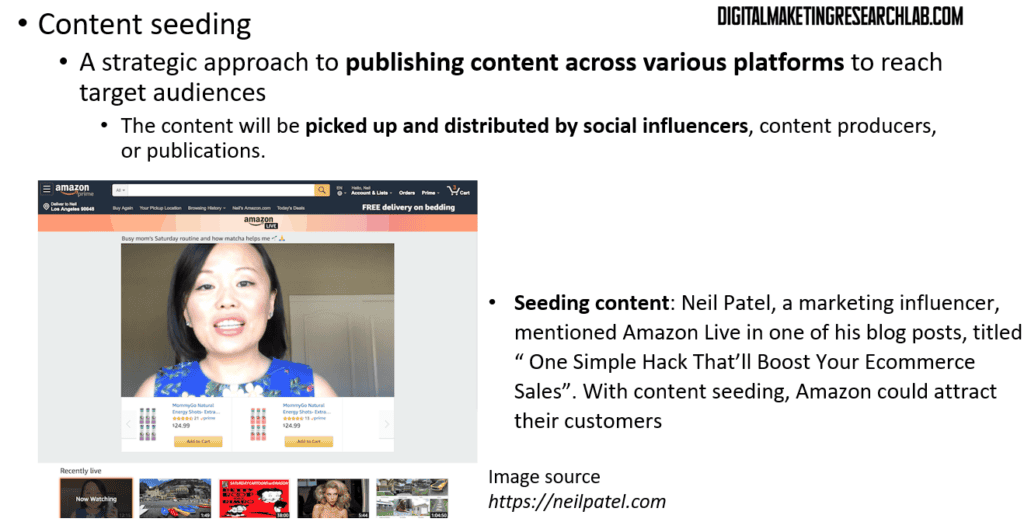
The benefits of content seeding include:
– Reaching a much wider audience.
– Ensuring relevancy by exposing your content to the right people.
– Building credibility through influencer distribution.
The steps for effective content seeding include:
1. Conducting social listening to understand what content and influencers resonate with your audience.
2. Identifying relevant influencers to target based on their following and expertise.
3. Connecting with those influencers through channels like hashtags, email, or mutual connections.

Content promotion is the strategic approach to getting your content seen by a wider audience beyond your own channels. This involves both paid and unpaid methods:
Paid methods include things like social media advertising, influencer marketing, and affiliate marketing.
Unpaid methods involve leveraging your owned media channels like your website and email list, as well as tactics like guest blogging and strategic use of hashtags.
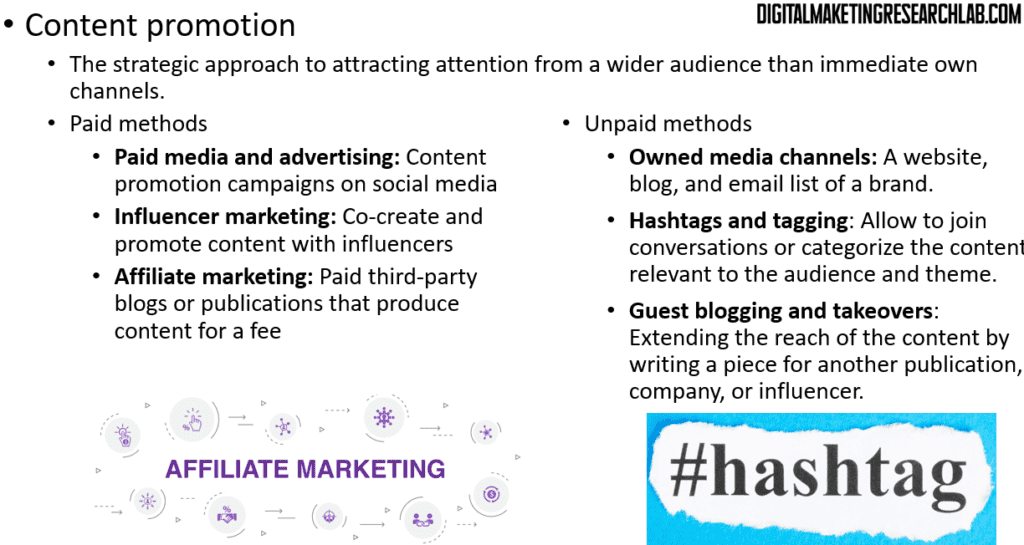
There are also some key considerations around what motivates people to share content online. The four main drivers are:
1. Incentives – when people share in return for something.
2. Fame – when people want to be the first to share something.
3. Utility – when people believe the content will be helpful to their connections.
4. Topicality and trends – when people want to show they are up-to-date.
Understanding these sharing motivations can help you create more shareable content.
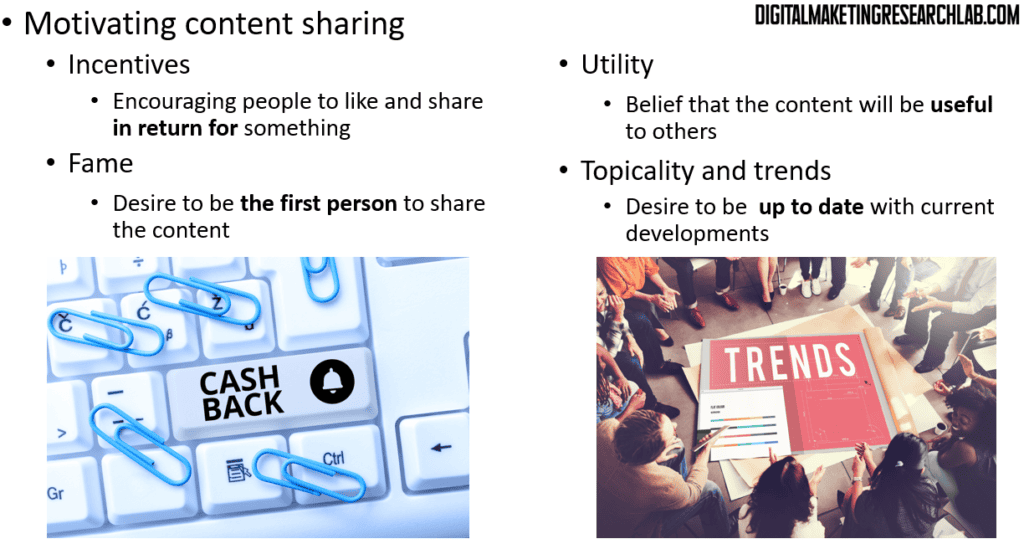
Now we are moving on to the “Review engagement metrics and improve performance” stage of the content marketing process.
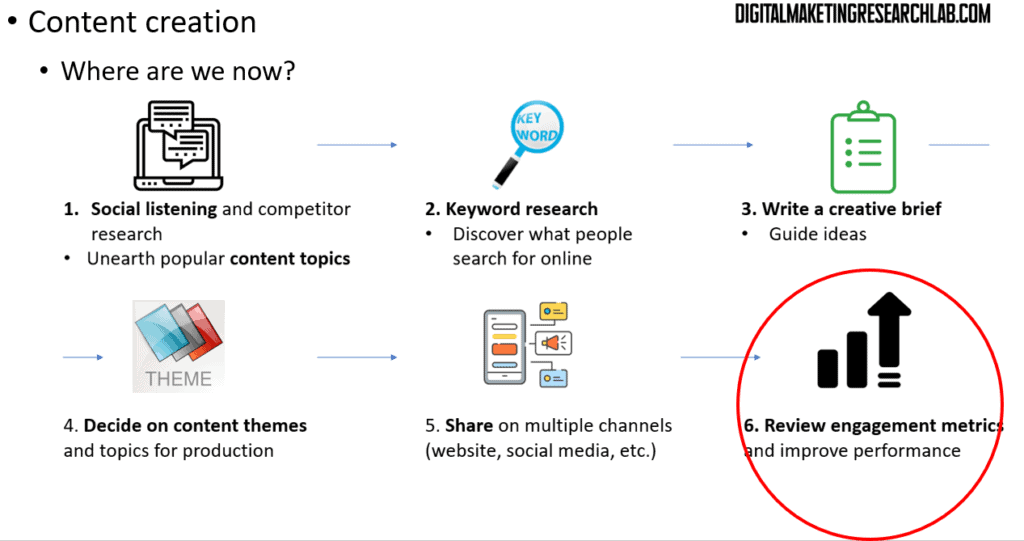
Measuring the success of your content marketing efforts through key performance indicators (KPIs) is vital. There are two main categories of metrics to track:
Engagement metrics include things like average time on site, bounce rate, number of returning visitors, pages viewed per session, scroll depth, organic search discovery, and various channel engagement stats like social shares and email opens.
Conversion metrics look at goals achieved, path to purchase, and cost per sale or lead.
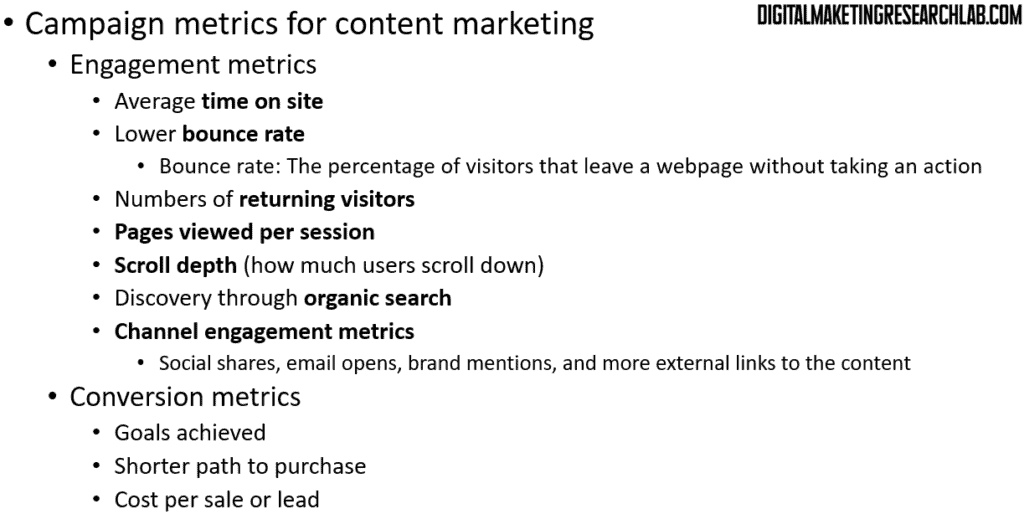
Analyzing the performance of your content is important to gain insights that can inform future content strategies. Some key areas to examine include:
– Identifying the best-performing themes, formats, channels, and individual content elements like images or headlines.
– Understanding when your content performs best in terms of time of day, day of week, etc.
By examining these insights, you can make data-driven decisions to improve the effectiveness of your content marketing.
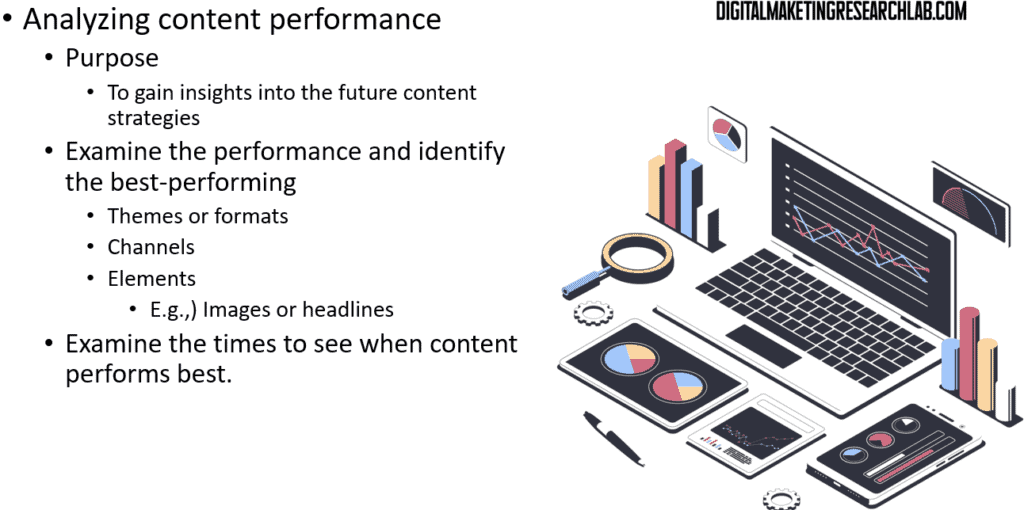
*Reference
Hanlon, A. (2021). Digital marketing: strategic planning & integration. Sage.
Digital Marketing Institute (2021). Introduction to Digital Marketing.